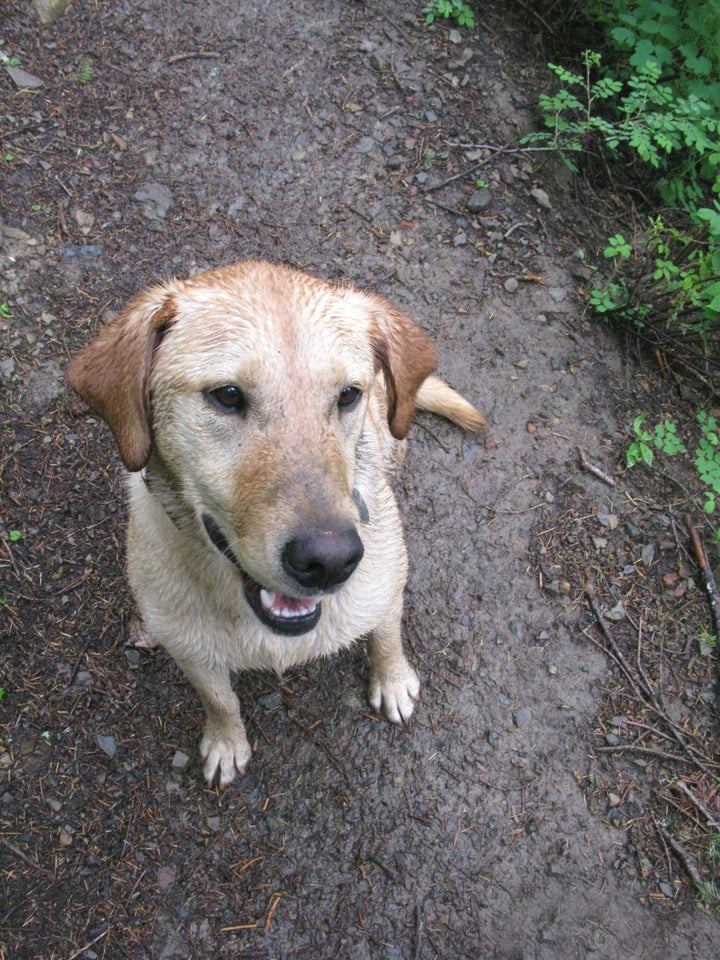
When it comes to your precious pet's teeth and gums, the old Ben Franklin idiom, "An ounce of prevention is worth a pound of cure" certainly applies.
Not only can you save your hard-earned money by preventing dental problems before they arise, you can also save your dog or cat from the discomfort of mouth pain.
And since periodontal (gum) disease can lead to much more serious health problems in both people and their companion animals, keeping your pet's mouth in good shape is as important as a healthy diet and exercise.
Poor Dental Health in Pets is Epidemic
Estimates state that almost 70 percent of cats and 80 percent of dogs three years of age and older have oral disease, typically involving the gums.
Small breed dogs are more prone to gum disease because they have a lot of teeth crowded into a small space, making cleaning more difficult. But the alarming statistics show poor dental hygiene is a problem affecting all pure and mixed dog breeds, and kitties as well.
Tooth extraction was at the top of the list of surgeries performed on cats and dogs in 2009, coming in as the number one reason for surgery on cats, and the third reason for dogs.
By the time your pet needs a tooth pulled, significant oral disease is present which may or may not be confined to her mouth.
From Plaque Buildup to Bad Gums to Heart Disease
When plaque isn't removed from your pet's teeth, it collects there and around the gum line and within a few days hardens into tartar. Tartar sticks to the teeth, and also irritates the gums. Irritated gums become inflamed -- a condition known as gingivitis. If your pet has gingivitis, the gums will be red rather than pink, and his breath may be noticeably unpleasant.
If the tartar isn't removed, it will build up under the gums eventually causing them to pull away from the teeth. This creates small pockets in the gum tissue which become repositories for additional bacteria. At this stage, your pet has developed an irreversible condition, periodontal disease, which causes considerable pain and can result in abscesses, infections, loose teeth and bone loss.
How quickly this process takes place in your pet's mouth depends on a number of factors, including:
• Age
• Overall health
• Diet
• Breed
• Genetics
• The frequency and quality of dental care received
Studies point to a definite link between gum disease and heart disease in humans and dogs (studies on cats are sparse, but it's reasonable to assume a similar link exists for felines).
When periodontal disease is present, the surface of the gums is weakened. The breakdown of gum tissue allows mouth bacteria to invade your pet's bloodstream and travel throughout her body. If her immune system doesn't kill off the circulating bacteria, it can reach the heart and infect it. Studies have shown that oral bacteria, once launched into the bloodstream, seem able to fight off attacks by the immune system.
A Purdue University study points to a strong correlation in canines between gum degeneration and endocarditis, which is an inflammatory condition (infection) of the valves or inner lining of the heart.
Five Crucial Steps to Keeping Your Pet's Mouth Healthy
1. Feed a species appropriate, preferably raw, diet. Giving your dog or cat the food her body was designed to eat sets the stage for vibrant good health. When your pet gnaws on raw meat in particular, it acts as a kind of natural toothbrush.
2. If your pet is a dog, offer a fully digestible, high quality dental dog chew to help control plaque and tartar on his teeth. The effect is similar to chewing raw bones, but safer for powerful chewers or dogs that have had restorative dental work done and can't chew raw bones.
3. Brush your pet's teeth, preferably every day. If every day is too tall an order, commit to do it several times a week. If you've never tried brushing those canine or feline choppers -- or you're not having much luck when you try -- keep in mind that a little time, patience and persistence can reap tremendous rewards in terms of your pet's well-being and healthcare costs.
4. Perform routine mouth inspections. Your pet should allow you to open his mouth, look inside and feel around for loose teeth or unusual lumps or bumps on the tongue, under the tongue, along the gum line and on the roof of his mouth.
5. Arrange for regular oral exams performed by your veterinarian. He or she will alert you to any existing or potential problems in your pet's mouth, and can recommend professional teeth cleaning under anesthesia if necessary.
Dr. Karen Becker is a proactive and integrative wellness veterinarian. You can visit her site at: MercolaHealthyPets.com.
Her goal is to help you create wellness in order to prevent illness in the lives of your pets. This proactive approach seeks to save you and your pet from unnecessary stress and suffering by identifying and removing health obstacles even before disease occurs. Unfortunately, most veterinarians in the U.S. are trained to be reactive. They wait for symptoms to occur, and often treat those symptoms without addressing the root cause.
By reading Dr. Becker's information, you'll learn how to make impactful, consistent lifestyle choices to improve your pet's quality of life.